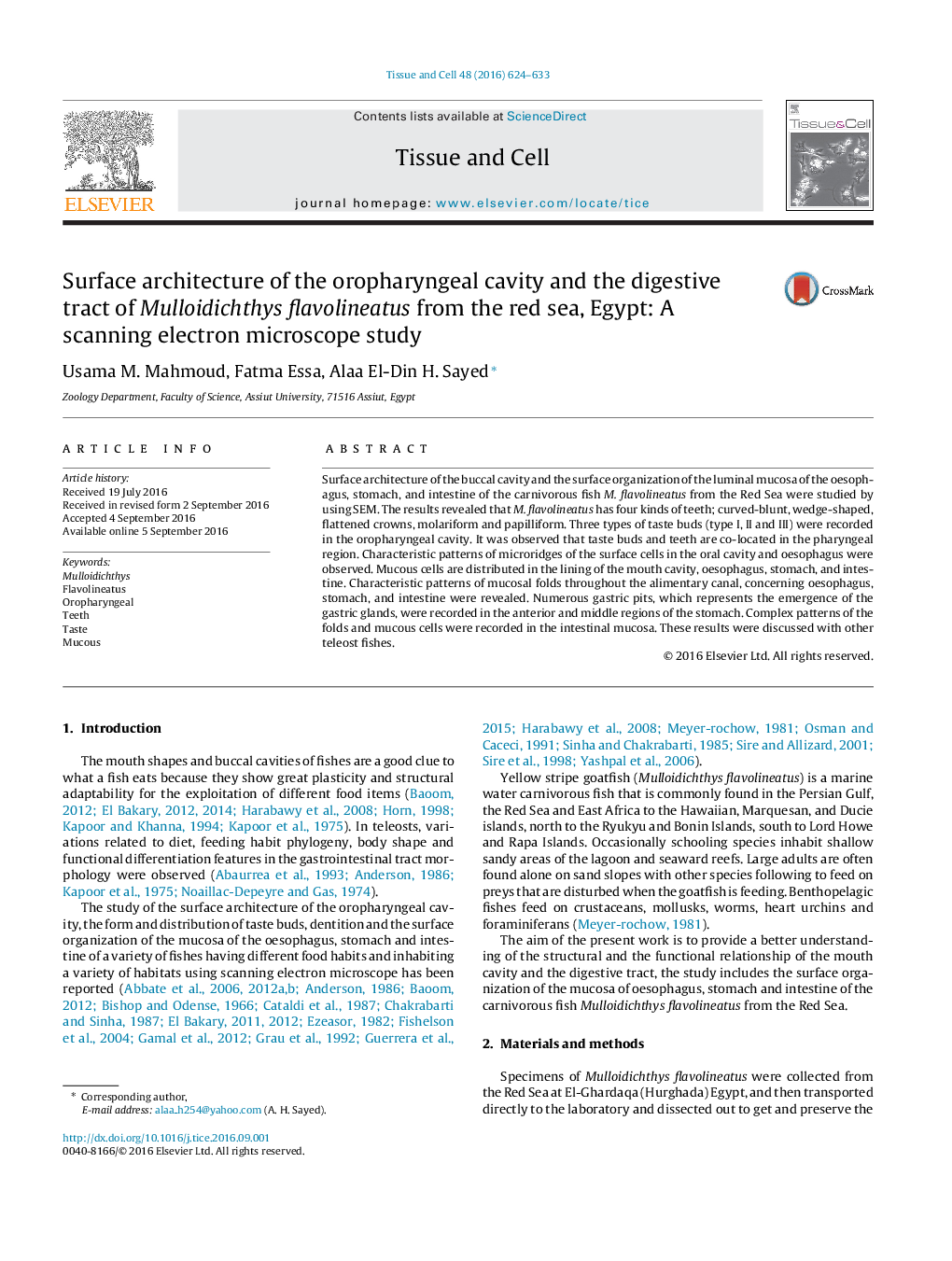| Article ID | Journal | Published Year | Pages | File Type |
|---|---|---|---|---|
| 5535070 | Tissue and Cell | 2016 | 10 Pages |
â¢The alimentary canal of the M. flavolineatus was studied.â¢SEM was used to identify the layers differences.â¢Complex patterns of the folds and mucous cells were recorded in the intestinal mucosa.â¢Numerous gastric pits, represent the emergence of the gastric glands, were recorded.
Surface architecture of the buccal cavity and the surface organization of the luminal mucosa of the oesophagus, stomach, and intestine of the carnivorous fish M. flavolineatus from the Red Sea were studied by using SEM. The results revealed that M. flavolineatus has four kinds of teeth; curved-blunt, wedge-shaped, flattened crowns, molariform and papilliform. Three types of taste buds (type I, II and III) were recorded in the oropharyngeal cavity. It was observed that taste buds and teeth are co-located in the pharyngeal region. Characteristic patterns of microridges of the surface cells in the oral cavity and oesophagus were observed. Mucous cells are distributed in the lining of the mouth cavity, oesophagus, stomach, and intestine. Characteristic patterns of mucosal folds throughout the alimentary canal, concerning oesophagus, stomach, and intestine were revealed. Numerous gastric pits, which represents the emergence of the gastric glands, were recorded in the anterior and middle regions of the stomach. Complex patterns of the folds and mucous cells were recorded in the intestinal mucosa. These results were discussed with other teleost fishes.
